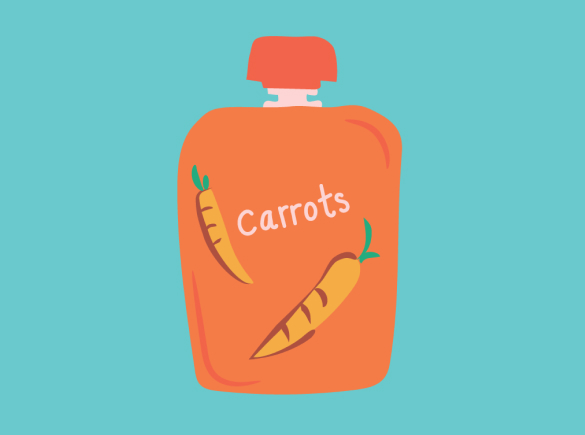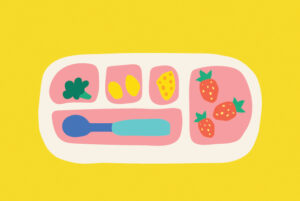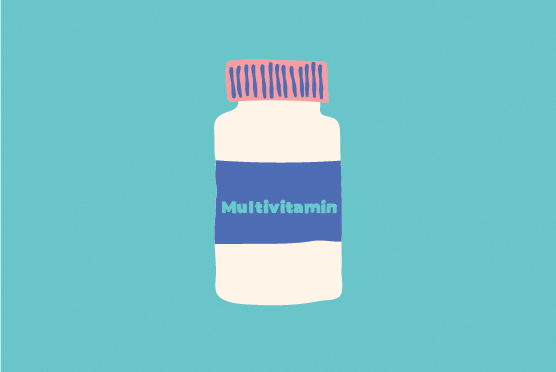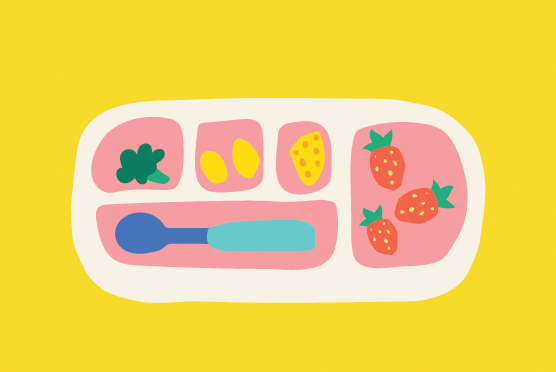Inside this article
There is no doubt that the baby food and pouches aisle has been under increasing spotlight in recent years. Experts are widely raising questions and concerns about the quality, nutritional content, and long-term health implications of many products. However, as a parent, navigating these foods can feel like a minefield, and many parents express their frustrations, feelings of guilt, or worry about whether they’re making the “right” choices for their child.
The reality is that commercial baby foods, including pouches, can play a role in feeding, but they are not without their limitations. Understanding the facts behind the marketing, ingredients, and how these foods fit into a balanced diet is key to helping parents make informed choices and decisions.
In this blog, we’ll explore:
- The concerns about commercial baby foods, including recent studies
- Tips for choosing and using commercial baby foods
Are commercial baby foods and pouches unhealthy?
It’s important to start by stating that no single baby food product is inherently ‘unhealthy’. Commercial baby foods can be included as part of a balanced and varied diet for babies. However, it is helpful for all parents to be aware of the factors to consider when choosing and using shop-bought baby foods, the frequency of use, and the impact of marketing on decision-making.
It’s also worth noting that foods sold and advertised as suitable for babies under 12 months must meet specific regulatory requirements regarding their nutritional composition. While these regulations are designed to ensure safety and appropriateness, it is evident from elevated concerns that they do not always guarantee that these products are the best nutritional option for babies, who have very unique nutritional needs. This is particularly the case if heavily relied upon as a source of nutrition during the weaning period, with minimal exposure to a variety of suitable family foods.
Concerns surrounding commercial baby foods and pouches
Over recent years, concerns have been rising about the overall suitability of these products for babies. Research and reviews have highlighted issues such as:
- High levels of free sugars (especially in fruit-based pouches) or added sugars, which can have implications for dental health
- Lack of texture progression and variety, which can affect the development of important feeding and eating skills
- Over-reliance on sweet flavours (fruits and root vegetables), which can have the potential to shape taste preferences
- Marketing that may mislead parents about the healthfulness or developmental appropriateness of certain products, including many being marketed as appropriate from 4+ months of age
- Poor overall nutrient density, with low levels of key nutrients like iron, zinc and omega-3 fats
- Limited exposure to common food allergens such as egg and peanut
The reality is that these foods are also often expensive. With a single 70g baby food pouch of pea puree costing 45p, but a 900g bag of frozen peas costing just over £1.
Recent research about baby foods and pouches
Recent research from the University of Leeds (April 2025) has underscored these concerns. The study, funded by Which? Fund, examined 632 baby and toddler food products, revealing that many leading brands offer high-sugar and nutritionally poor meals for infants. Particularly alarming was the low level of essential nutrients, such as iron, as well as the impact of processing on the vitamin C content, which was significantly diminished, along with other antioxidants. Additionally, many products were found to contain poor fibre, fat, and protein levels. Worryingly, the study also found that one in four products would require a high sugar warning label according to WHO guidelines. Of course, all of these factors can have significant implications for babies with high nutrient requirements.
Many baby foods and pouch products were also found to be marketed for four-month-old babies, contradicting NHS and WHO recommendations to start weaning at around six months. Furthermore, the research highlighted that pouches with spouts account for over a third of the baby foods market (38%), and around half did not include a recommendation against allowing children to drink via the spout. This practice can lead to prolonged exposure of teeth to sugary substances, increasing the risk of dental decay, which is already at alarming levels in the UK amongst children within the early years.
These concerns don’t mean you need to avoid commercial baby foods altogether. In fact, they can be hugely convenient when you’re outside of the house, travelling, and more. However, moderating their use in a baby’s diet, knowing what to look for on labels, and feeling confident about how and when to use them can make all the difference.
Tips for choosing and using commercial baby foods
Looking down the baby food aisle can feel overwhelming. Bright colours and lots of alluring claims such as “natural” and “no added sugars” can impact decision making, so here are some top tips for choosing and using commercial baby foods;
Check the back, don’t rely on the front!
Whilst the front of a baby food pouch can suggest one thing, ‘broccoli, peas and pear’, the ingredients list at the back will give you a much better idea of the proportions of these. Ingredients are listed by weight, e.g. the first ingredient is what there is most of in the meal. If a pouch or meal’s first ingredients are still the sweeter options, or fruit when you think you are getting vegetables, remember this is what your baby will be getting and tasting.
Consider simple swaps.
Many baby cereals and oat products you find down the baby food aisle contain lots of extra ingredients that are really not necessary. Instead of baby porridge, switching to standard oats or milled oats cooked with milk, along with some mashed fresh fruit, will be cheaper and more nutrient-dense..
Prioritise variety.
It is common for babies to enjoy sweeter and very smooth baby foods, which means it’s tempting to keep defaulting to these, as it can make you feel reassured as a parent that they have eaten something. While this is understandable, it’s important to expose your baby to a wide range of tastes, textures, and flavours early on. Try to offer variety with any pre-prepared foods, including those which build texture and include a wide range of different food groups.
Incorporate pre-prepared foods alongside whole foods and family foods.
Pre-prepared baby foods can be easily used and incorporated into other meals. For example, combine fruit with plain or Greek yoghurt, or vegetable pouches with cous cous or pasta. Whenever possible, adding foods alongside as your baby progresses with weaning will help provide all the important nutrients and variety that support the journey of learning to eat.
Overall it’s important to emphasis that these foods should not be the primary source of nutrition for babies during weaning, and ideally should be used in moderation to support a balanced and varied weaning diet.
To conclude
Feeding decisions can be emotionally charged for parents, but it’s crucial to recognise that concerns about commercial baby foods and pouches should primarily focus on the responsibilities of manufacturers and regulatory bodies. The emphasis must be on improving product formulations and strengthening legislation to ensure children’s health is prioritised. This is not about assigning blame to parents for their feeding choices. Parents deserve transparency and support.









